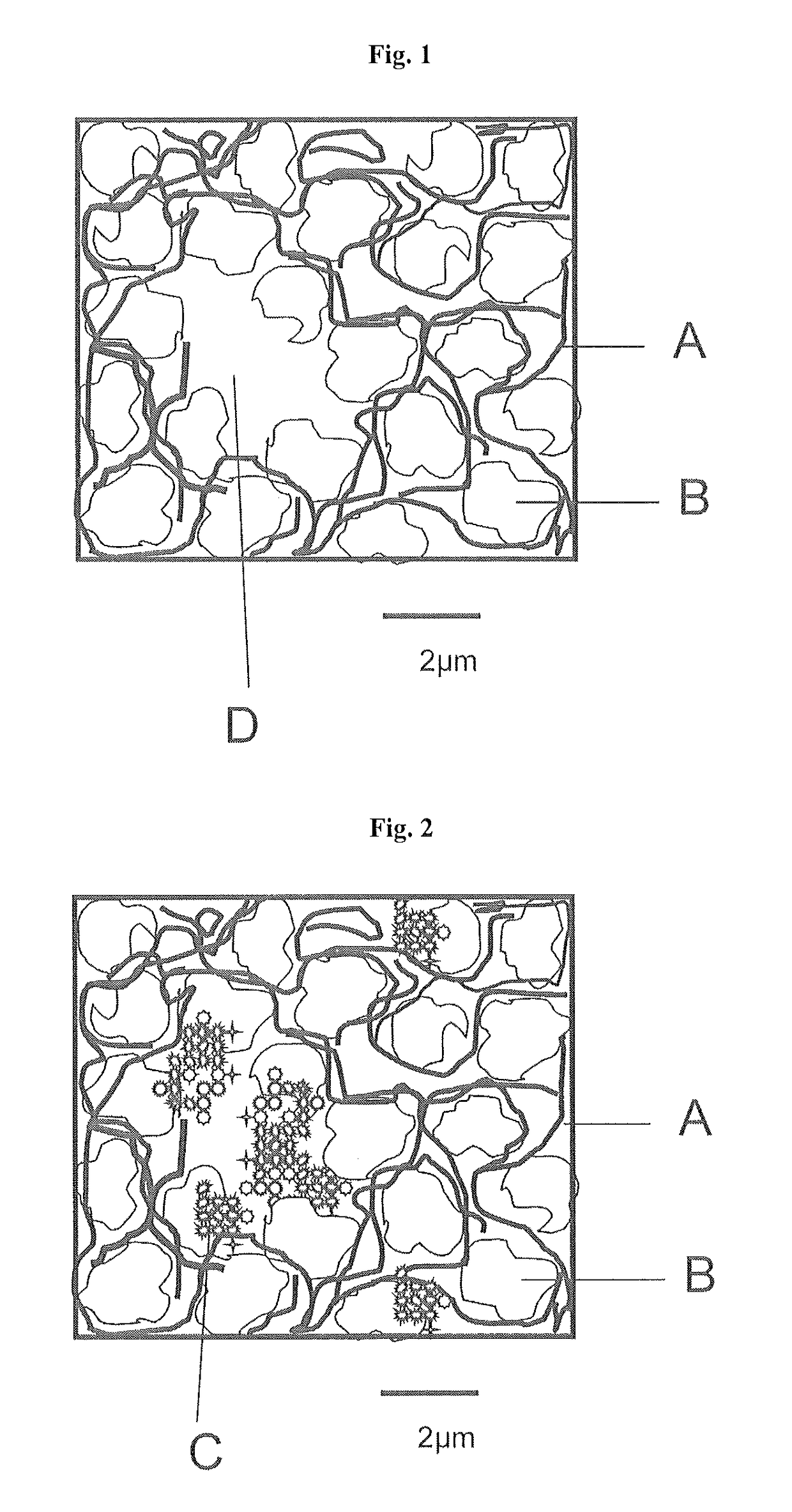Gas diffusion electrodes and process for production thereof
a technology of gas diffusion electrodes and electrodes, which is applied in the direction of electrode coatings, cell components, electrochemical generators, etc., can solve the problems of high concentration of oxygen in the short-term stability of the ion exchanger membrane, and the adverse effect of oxygen supply on the performance of the oce, etc., to improve or repair the existing oxygen-consuming electrodes
- Summary
- Abstract
- Description
- Claims
- Application Information
AI Technical Summary
Benefits of technology
Problems solved by technology
Method used
Image
Examples
examples
[0086]An oxygen-consuming electrode manufactured by the wet process was incorporated into an electrolysis half-cell. The electrode had, at 4 kA / m2, a potential of −400 mV (measured against an Ag / AgCl electrode). The electrode is permeable to visible amounts of oxygen (formation of small gas bubbles) at a pressure differential of 20 mbar between gas side and liquid side.
[0087]The oxygen-consuming electrode was deinstalled, rinsed with deionized water and dried on the outside. 100 g / m2 of a suspension of 1.4 g of nanoscale silver powder of the SP-7000-95 type from Ferro Corporation, Cleveland, USA, (mean particle diameter 60 nm) in 100 g of i-propanol were sprayed on. The isopropanol was vaporized, then the electrode was dried at 80° C. in a drying cabinet for 30 min, and then installed back into the electrolysis half-cell. At 4 kA / m2, the electrode had a potential of −320 mV and was impervious at a pressure differential of 40 mbar between gas side and liquid side.
[0088]Thus, the trea...
PUM
| Property | Measurement | Unit |
|---|---|---|
| mean particle diameter | aaaaa | aaaaa |
| specific surface area | aaaaa | aaaaa |
| mean particle diameter | aaaaa | aaaaa |
Abstract
Description
Claims
Application Information
 Login to View More
Login to View More - R&D
- Intellectual Property
- Life Sciences
- Materials
- Tech Scout
- Unparalleled Data Quality
- Higher Quality Content
- 60% Fewer Hallucinations
Browse by: Latest US Patents, China's latest patents, Technical Efficacy Thesaurus, Application Domain, Technology Topic, Popular Technical Reports.
© 2025 PatSnap. All rights reserved.Legal|Privacy policy|Modern Slavery Act Transparency Statement|Sitemap|About US| Contact US: help@patsnap.com


